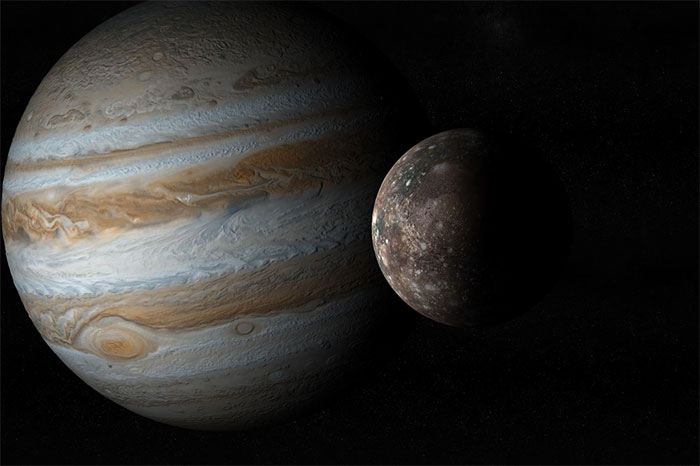China is demonstrating ambitious goals for conquering the Solar System.
At the end of January 2022, China released its fifth white paper on its space program, outlining its objectives to showcase its ambition to become the number one space power.
Not only is it establishing plans to develop the most powerful rocket in history (Long March 9), but it is also aiming to construct a habitable lunar research station and send a Mars lander to search for signs of life. China has been successfully undertaking missions that both the United States and Europe are pursuing.
Most recently, on September 23, 2022, Space.com reported that China is planning an ambitious “one arrow to hit two targets” mission, launching two spacecraft simultaneously to Jupiter and Uranus around 2030.
This mission will be named Tianwen 4 (Tiānwèn 4). At that time, astronomers will witness a larger probe dedicated to Jupiter and a smaller spacecraft sent on a journey to the distant Uranus in the Solar System.
This pair of spacecraft will be launched on the Long March 5 (Chángzhēng 5) rocket, which is currently China’s most powerful rocket.
Exploring Jupiter
Previously, China announced that it was in the planning stage for a mission to explore Jupiter. New details were presented by Wang Qiong from the Space Engineering and Lunar Exploration Center of the China National Space Administration (CNSA) at the International Astronautical Congress 2022 in Paris on September 21, 2022.
The main spacecraft will be dedicated to investigating the Jupiter system and will eventually enter orbit around Callisto (one of Jupiter’s moons) to conduct detailed investigations of the outer layers of the Galilean moon group (which includes the four largest moons of Jupiter – Io, Europa, Ganymede, and Callisto).
Exploring Uranus
According to Wang Qiong, the smaller spacecraft, weighing several hundred kilograms, will undertake a longer journey to Uranus.
“The scientific objectives are still under consideration,” Wang Qiong told Space.com after the presentation. Previous presentations indicated that China is focusing on Callisto as a primary target that could reveal much about the moon and the history of the Jovian System, or investigate unusual moons of Jupiter that could provide insights into its early days.
[Jovian System: With a total of 79 known moons – including the four large moons known as the Galilean satellites – Jupiter nearly qualifies as a solar system in itself. Not only is Jupiter the largest planet in the Solar System, but it is also the most massive planet in the universe, with a mass 300 times that of Earth. Its size plays a crucial role in the number of moons orbiting Jupiter, as it provides a large stable gravitational region to support many moons.]

Illustration of Jupiter and its moon Callisto. (Photo: Ianm35 / Getty Images).
CNSA had previously considered a lander as part of the mission focusing on Callisto, but Wang Qiong stated that there will be no lander.
Exploring the Solar System
This mission is part of China’s expanded Solar System exploration program. The mission “Tianwen” – meaning Heavenly Inquiry, is named after the ancient Chinese poet Qu Yuan’s poem “Tianwen,” which was written about 2,300 years ago.
China launched its first independent interplanetary mission in 2020, sending the Tianwen 1 (Tiānwèn 1) orbiter and the Zhurong (Zhùróng) rover to Mars. Next, Tianwen 2 (Tiānwèn 2) is expected to launch around 2025, targeting a small near-Earth asteroid named 469219 Kamoʻoalewa for a sample return mission and subsequent visits to a main belt comet.

China’s Mars rover Zhurong. (Photo: CGTN).
Tianwen 3 (Tiānwèn 3) will be a complex dual-launch Mars sample return mission, potentially starting in 2028, providing Earth with the first samples collected from the Red Planet.
Wang Qiong noted that these missions, along with plans to build an International Lunar Research Station in the 2030s, aim to “promote the use of human resources to create a new model of international cooperation in space exploration to contribute to the peaceful use of space.”
Ground-Based Space Exploration
On September 22, 2022, the South China Morning Post reported that China is constructing the world’s largest observational telescope, known as QTT. The project, led by the Xinjiang Astronomical Observatory, will help answer scientific questions about the universe and guide China’s space exploration.
The construction of the world’s largest fully steerable radio telescope began on September 21, 2022, in the Xinjiang region of western China.
Chinese astronomers stated that the Qitai radio telescope (QTT) will help address a range of questions, from star formation to the detection of gravitational waves, black holes, and dark matter.
This telescope will also support China’s exploration of the Moon, Mars, and beyond by providing tracking services for rockets and spacecraft, with its 110-meter diameter dish able to point in any direction in the northern hemisphere sky.
Once completed, the QTT will surpass the Robert C. Byrd Green Bank Telescope in the United States, which has a 100-meter diameter.
Currently, China operates the world’s largest radio telescope – the 500-meter Aperture Spherical Telescope (FAST) – located in a natural depression in the southwestern mountains of Guizhou.


















































